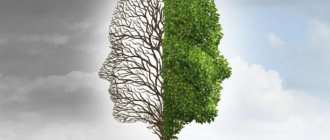"No man is like an island" (John Donne)
Society consists of many individuals who are similar in many ways, but also extremely different in their aspirations and worldviews, experiences and perceptions of reality. Morality is what unites us, these are those special rules adopted in the human community and defining a certain general view of categories such as good and evil, right and wrong, good and bad.
Morality is defined as norms of behavior in society that have been formed over many centuries and serve for the correct development of a person in it. The term itself comes from the Latin word mores, which means rules accepted in society.
Moral Traits
Morality, which is largely decisive for the regulation of life in society, has several main features. Thus, its fundamental requirements for all members of society are the same, regardless of position. They operate even in situations that are outside the area of responsibility of legal principles and extend to such areas of life as creativity, science, and production.
Norms of public morality, in other words, traditions, are significant in communication between specific individuals and groups of people, allowing them to “speak the same language.” Legal principles are imposed on society, and failure to comply with them carries with it consequences of varying severity. Traditions and moral norms are voluntary; every member of society agrees to them without coercion.
Example of moral and immoral activities
Task Definition of a business organization Enter the correct answer For...Organizations are characterized by the following features: they are created by individual teams, entrepreneurs, as well as by the state, local authorities, parties can be state, municipal, private (joint stock, individual) Participation in them provides income, wages .
The basis of internal regulation is administrative regulations, principles of unity of command, appointment, expediency Correct answer options: business; 183.Task Family according to Merton Mark the correct answer Family, according to Merton, is an example of a secondary social group £ yes R no 184.
- Task Secondary group Mark the correct answer A secondary social group is formed from people whose relationships are built on an emotional basis £ yes R no Increased 186.
- Assignment Goals of semi-organizations Mark the correct answer In semi-organizations, general goals coincide with individual ones R yes £ no 188.
- Assignment Definition of a union organization Enter the correct answer For....
- Assignment Purpose of business and union Mark the correct answer In business and union organizations, the common goal is a factor of unification R yes £ no 187.
- The organization is characterized by the following features: Goals are developed “from within” and represent a generalization of the goals of individual participants. Regulation is ensured by a jointly adopted charter, the principle of election. Membership in them satisfies the political, social, cultural, creative, material and other interests of the participants. Correct answer: union (public ); union; public; 185.
- Assignment Organizational relationships according to Prigogine Mark the correct answer Based on the type of organizational relationships, Prigozhin divides all organizations into primary and secondary R yes £ no 189.
We recommend reading: Preferential work experience in two specialties
Assignment Method of communication of an organization with the environment Mark the correct answer According to the method of connection with the environment, relations between organizations can be organizational-mass and classroom £ yes R no 190. Assignment Inter-organizational relations Mark the correct answer Inter-organizational relations can be built according to the type of cooperation or subordination R yes £ no 191 .Assignment Relationships of cooperation Mark the correct answer Relationships of cooperation can be relations of affiliation or functional £ yes R no 192.
- Assignment Franchuk's principle of profit distribution Mark the correct answer Franchuk, according to the principle of profit distribution, divides organizations into economic and public £ yes R no 194.
- Task Organization according to Merton Mark the correct answer An organization, according to Merton, is a social group where interaction between people is determined by the desire to achieve a goal R yes £ no 197.
- Assignment Social organization Enter the correct answer...
- An organization is a system of social groups and relationships between them, united to achieve certain goals through the distribution of functional responsibilities, coordination of efforts and compliance with certain rules of interaction in the process of functioning of the management system Correct answer: Social; 198.
- Assignment Organization according to Merton Mark the correct answer Organization according to Merton is a secondary social group R yes £ no 200.
- Task Labor organization Enter the correct answer...
- Assignment Social organization according to Merton Mark the correct answer Merton defined organization as a type of social group R yes £ no 199.
- Assignment The principle of legitimacy according to Franchuk Mark the correct answer According to the principle of legitimacy, according to Franchuk, organizations can be state, municipal, private, public and mixed forms of ownership £ yes R no 195.
- An organization is an organizationally assigned set of people acting according to a single plan to achieve a goal that is significant for all members of the organization and to create a certain socially necessary product or provide services Correct answer: Labor; labor; 196.
- Task Cooperation relations2 Mark the correct answer Cooperation relations can be one-sided or unifying R yes £ no 193.
Types of moral standards
Over the centuries, moral standards have taken different forms. Thus, in primitive society, such a principle as taboo was indisputable. People who were proclaimed as transmitting the will of the gods were strictly regulated as prohibited actions that could threaten the entire society. Violation of them was inevitably followed by the most severe punishment: death or exile, which in most cases was the same thing. Taboos still persist in many traditional societies. Here, as a moral standard, examples are the following: you cannot be on the territory of the temple if the person does not belong to the clergy caste; You cannot have children from your relatives.
Examples of moral and immoral activities
Activity is a form of activity inherent only to humans, conscious, purposeful interaction with the outside world, carried out to achieve certain results and satisfy needs and interests. Activity is a set of interrelated acts aimed at a specific goal. Human activity is the basis for the emergence and development of social connections and processes .
All living beings are characterized by activity as the ability to respond to various processes in the environment in accordance with their needs and requirements. However, animals adapt to natural conditions in the course of their life, while humans not only adapt to the surrounding natural and social environment, but also change it in in accordance with their goals and interests. Animal behavior is subject to instincts, the biological program that is inherent in them by nature, and has a consumer nature. At the same time, the behavior of animals is directed towards a specific goal that is not realized by them. Man is able to control his instincts, he proceeds from specific socio-historical conditions, relies on the generalized experience of previous generations and creates new action programs. Only human activity is characterized by goal setting - a conscious determination of the goal and ways to achieve it.1. Conscious character: a person, as a subject of activity, is aware of its goal, seeks and implements ways to achieve it and anticipates the result.
All this requires a person to be aware of cause-and-effect relationships in natural and social processes. 2. Productive (creative, creative) nature: activity is aimed at obtaining a certain result. 3. Transformative nature: in the course of activity a person changes the world around him, nature and social reality .A significant place in human activity is occupied by the production and use of tools, with the help of which he influences living conditions, changing them to meet his needs. The result of human activity is the artificial environment - culture and society. 4. Social character: in the process of activity, a person enters into contacts with other people. Many human needs can be satisfied only in a team, as a result of joint activities. The main components of human activity are subject and object. The subject can be one person, a group of people or a social organization. Inanimate objects and living beings, incapable of conscious actions, cannot be subjects of activity (mechanisms, animals, natural phenomena). An object is what the subject’s activity is aimed at. The object of human activity there may be natural and social phenomena, material objects, other people, the actor himself.
Activity has a certain structure: it arises on the basis of motives that encourage the subject to set a goal, determine the means to achieve it and perform certain actions to obtain the desired result. Motives of activity are the needs, beliefs, interests, ideals of the subject of activity, which act as internal incentive forces cause activity aimed at achieving a specific goal. A goal is a conscious image of the desired result for the sake of which the subject takes action.
Custom
A moral norm is not only generally accepted, as a result of its derivation by some elite, it can also be a custom. It represents a repetitive pattern of actions that is especially important in order to maintain a certain position in society. In Muslim countries, for example, traditions are more revered than other moral norms. Customs based on religious beliefs in Central Asia can cost lives. For us, who are more accustomed to European culture, legislation is an analogue. It has the same impact on us as traditional moral standards have on Muslims. Examples in this case: a ban on drinking alcohol, closed clothing for women. For our Slavic-European society, the customs are to bake pancakes on Maslenitsa and celebrate the New Year with a Christmas tree.
Among moral norms, tradition is also distinguished - a procedure and pattern of behavior that is preserved for a long time, passed on from generation to generation. A kind of traditional moral standards, examples. In this case, these include: celebrating the New Year with a tree and gifts, perhaps in a certain place, or going to the bathhouse on New Year’s Eve.
Real cases
A variety of immoral acts take place in our lives. And you wouldn’t wish to become their victims or witnesses even to your enemy.
How many situations are known when sons got drunk to the point of insanity and threw their fists at their mothers? Or when someone’s beloved pet was subjected to cruel acts by juvenile deviants for the sake of entertainment. Often many people have witnessed suicide, which also falls into this category of behavior. And of course, none of us is immune from betrayal for the personal benefit of a trusted person.
When you realize how often these and similar cases occur, it becomes extremely clear that morality in modern society, unfortunately, is by no means in the first place in the value system.
Functions of morality
One of the functions is evaluation. Morality considers events and actions that take place in society from the point of view of their usefulness or danger for further development, and then makes its verdict. Various kinds of reality are assessed in terms of good and evil, creating an environment in which each of its manifestations can be assessed both positively and negatively. With the help of this function, a person can understand his place in the world and form his position.
The regulatory function is no less important. Morality actively influences people's consciousness, often acting better than legal restrictions. From childhood, with the help of education, each member of society develops certain views on what can be done and what cannot be done, and this helps him adjust his behavior in such a way that it is useful for himself and for development in general. Moral norms regulate both the internal views of a person, and therefore his behavior, and the interaction between groups of people, allowing the preservation of the established way of life, stability and culture.
The educational function of morality is expressed in the fact that under its influence a person begins to focus not only on his own needs, but also on the needs of the people around him and society as a whole. The individual develops an awareness of the value of the needs of other participants in society, which, in turn, leads to mutual respect. A person enjoys his freedom as long as it does not violate the freedom of other people. Moral ideals that are similar among different individuals help them better understand each other and act harmoniously together, positively influencing the development of each of them.
Immoral acts: examples from life
Each of us is a member of a society in which there is traditionally a certain model of behavior that is considered normal. It is enshrined in the concept of universal human values. And most importantly, it does not violate ethics and does not harm others. However, there are people who do not follow it.
On the contrary, they, neglecting moral principles, commit immoral acts that harm other members of society. Such people are called deviants, and their behavior is unacceptable. Many immoral acts are immoral not only from a human point of view, but also from a religious one. Take greed, for example. An unhealthy craving for material wealth often pushes people to commit terrible acts, with the help of which they manage to satisfy their greed. Pride, which is one of the seven deadly sins in Catholicism, also refers to immoral qualities.
Excessive arrogance and disrespect for other people do not make anyone better. Just like adultery.
Adultery is a sin, an immoral act, betrayal and humiliation of the one to whom the oath of allegiance was given. The person who committed it is not worthy of trust, respect and good treatment. Vanity is perceived by many as a socio-psychological personality trait, which, however, does not make people beautiful. They are often selfish, arrogant, and constantly crave conviction of their own superiority.
It would seem, is it really bad to appreciate and love yourself?
No it is OK. But only vanity implies putting all of the above on display, which is usually done through humiliation or neglect of other people. Many of us have long ceased to notice the immoral actions of people who are encountered at almost every step. A striking example is the use of obscene expressions, observed everywhere.
Profanity is speech filled with indecent expressions.
They are also called obscene. Why? Because they are shameless, and therefore violate public morality. Swearing, which has long become familiar and has lost its ability to shock members of modern society, has practically ceased to fall into the category of immoral acts.
In contrast to insults, which are deliberate humiliation of the dignity and honor of an individual. And such immoral acts as insults are punishable by law. All provisions relating to this are spelled out in Article 5.61 of the Code of Administrative Offenses of the Russian Federation. If a person commits an immoral act, then it definitely does not fit into the generally accepted moral framework.
But it corresponds to certain forms of behavior that contradict the norms.
There are several of them. These are drug addiction, substance abuse, prostitution, crime, alcoholism and suicide. It is believed that a person adheres to one or another form of behavior for one of three reasons. The first, the most common in modern society, is inequality on the social ladder. Everything is simple here. A person’s behavior and upbringing are influenced by his income.
The smaller it is, the higher the likelihood of personality degradation.
An example of moral and immoral activity - Immoral acts: examples from life
Contents Each of us is a member of a society in which there is traditionally a certain model of behavior that is considered normal.
It is enshrined in the concept of universal human values. And most importantly, it does not violate the norms of morality and ethics, and does not harm others.
However, there are people who do not follow it. On the contrary, they, neglecting moral principles, commit immoral acts that harm other members of society.
Such people are called deviants, and their behavior is unacceptable. Many immoral acts are immoral not only from a human point of view, but also from a religious point of view. Take greed, for example. An unhealthy craving for material wealth often pushes people to commit terrible acts, with the help of which they manage to satisfy their self-interest.
Pride, which is one of the seven deadly sins in Catholicism, also refers to immoral qualities. Excessive arrogance and disrespect for other people do not make anyone better. Just like adultery.
Adultery is a sin, an immoral act, betrayal and humiliation of the one to whom the oath of allegiance was given.
The person who committed it is not worthy of trust, respect and good treatment. Vanity is perceived by many as a socio-psychological personality trait, which, however, does not make people beautiful. They are often selfish, arrogant, and constantly crave conviction of their own superiority. It would seem, is it really bad to appreciate and love yourself?
No it is OK. But only vanity involves putting everything listed on display, which is usually done through humiliation or neglect of other people. Many of us have long ceased to notice the immoral actions of people who meet us at almost every turn.
A striking example is the use of obscene expressions, observed everywhere. Profanity is speech filled with indecent expressions.
They are also called obscene. Why? Because they are shameless, which means they violate public morals. Swearing, which has long become familiar and has lost its ability to shock members of modern society, has practically ceased to fall into the category of immoral acts.
In contrast to insults, which are deliberate humiliation of the dignity and honor of an individual.
And such immoral acts as insults are punishable by law. All provisions relating to this are spelled out in Article 5.61 of the Code of Administrative Offenses of the Russian Federation.
If a person commits an immoral act, then he definitely does not fit into the generally accepted moral framework. But it corresponds to certain forms of behavior that contradict the norms. There are several of them. These are drug addiction, substance abuse, prostitution, crime, alcoholism and suicide.
It is believed that a person adheres to a particular form of behavior for one of three reasons. The first, the most common in modern society, is inequality on the social ladder. Everything is simple here. A person’s behavior and upbringing are influenced by his income.
Morality as a result of evolution
The basic moral principles of any time in the existence of society include the need to do good deeds and not cause harm to people, regardless of what position they occupy, what nationality they belong to, or followers of what religion they are.
The principles of norms and morality become necessary as soon as individuals interact. It was the emergence of society that created them. Biologists who focus on the study of evolution say that in nature there is also a principle of mutual utility, which in human society is realized through morality. All animals that live in society are forced to moderate their egoistic needs in order to be more adapted to later life.
Many scientists consider morality as a result of the social evolution of human society, being the same natural manifestation. They say that many of the principles of norms and morality, which are fundamental, were formed through natural selection, when only those individuals survived who could interact correctly with others. Thus, as an example, they cite parental love, which expresses the need to protect the offspring from all external dangers in order to ensure the survival of the species, and the ban on incest, which protects the population from degeneration through the mixing of too similar genes, which leads to the appearance of weak children.
Bad manners
When discussing moral and immoral actions, it is worth mentioning that the latter also includes behavior that is perceived by many as simple uncouthness and bad manners.
And examples of this accompany us in everyday life. In public transport, you can often see how ill-mannered individuals push those in front in the back, just to quickly leave the cabin. When leaving the premises, many do not hesitate to slam the door right in front of the noses of those who follow them, and without even looking back.
But most often, perhaps, there are individuals who openly violate the rules of the community. They place garbage on the landing, smoke in the entrance without opening the windows, and violate sanitation and hygiene in other ways. These are also immoral actions. Examples surround us everywhere, but we have stopped noticing many of them because, no matter how sad it may be, they have become commonplace.
Humanism as a basic principle of morality
Humanism is the fundamental principle of public morality. It refers to the belief that every person has the right to happiness and countless opportunities to realize this right, and that at the core of every society should be the idea that everyone in it has value and is worthy of protection and freedom .
The basic idea of humanism can be expressed in the well-known rule: “treat others the way you want to be treated.” Another person in this principle is seen as deserving the same benefits as any particular person.
Humanism assumes that society must guarantee basic human rights, such as the right to life, inviolability of home and correspondence, freedom of religion and choice of place of residence, and the prohibition of forced labor. Society must make efforts to support people who, for one reason or another, are limited in their abilities. The ability to accept such people distinguishes human society, which does not live according to the laws of nature with natural selection, dooming those who are not strong enough to die. Humanism also creates opportunities for human happiness, the pinnacle of which is the realization of one’s knowledge and skills.
Characteristics of immoral individuals
An immoral person can be easily recognized not only by behavior, but also by character.
Such people are characterized by greed, anger, envy, and gluttony. They often adhere to anarchist views, reject existing norms and try to undermine foundations. Once in a team, immoral people do not care at all about how their behavior will affect others. They may talk loudly, listen to music, spit on the floor and insult others. Examples of immoral behavior:
- profanity in the team;
- do not give up your seat in transport to the elderly, children or pregnant women;
- push a person getting off the bus to walk faster;
- skip the line;
- throw the cigarette butt on the floor.
Mercy as a basic principle of morality
Mercy is understood as a person’s readiness to help people in need, to sympathize with them, perceiving their suffering as his own and wanting to alleviate their suffering. Many religions pay close attention to this moral principle, especially Buddhism and Christianity. In order for a person to be merciful, it is necessary that he does not divide people into “us” and “strangers”, so that he sees “his own” in everyone.
Currently, great emphasis is placed on the fact that a person should actively help those who need mercy, and it is important that he not only provides practical assistance, but is also ready to support morally.
Attitude towards animals
It is impossible not to pay attention to the immoral actions of people regarding our smaller brothers. Cruelty to animals is not only a crime, but also a pressing moral issue. Individuals who allow themselves to mistreat our smaller brothers are not accepted by normal, modern society. They are condemned and condemned by other people.
Cruelty to animals is a truly immoral act. It does not pose a threat to public safety. But nevertheless it is unacceptable and unacceptable from another, moral point of view.
Morality and law
Law and morality are in close contact, since together they form the rules in society, but they have a number of significant differences. The relationship between legal and moral norms makes it possible to identify their differences.
The rules of law are documented and developed by the state as mandatory rules, non-compliance with which inevitably entails liability. The categories of legal and illegal are used as an assessment, and this assessment is objective, built on regulatory documents, such as the constitution and various codes.
Moral norms and principles are more flexible and can be perceived differently by different people, and can also depend on the situation. They exist in society in the form of rules that are passed on from one person to another and are not documented anywhere. Moral norms are quite subjective, assessment is expressed through the concepts of “right” and “wrong”; their failure to comply in some cases cannot lead to more serious consequences than public censure or simply disapproval. For a person, violating moral principles can lead to pangs of conscience.
Concept
Immoral behavior is a person’s violation of moral principles through actions. Morality is a kind of requirements for the people around you and yourself, which are considered correct during interaction. However, it is worth noting that the concept of morality is quite vague. Since, for example, for one person obscene language is considered the norm, but for another it is outrageous and immoral.
An example of differences in different cultures is the concept of adultery here and in Japan. A married man who regularly cheats on his wife with different women only evokes negative emotions and indignation in us. In Japan it's the opposite. The husband has the right to come home in a state of alcoholic intoxication, in the company of geishas, and the wife will not only not cause a scandal, but will also thank the priestesses of love for accompanying her and delivering her beloved to the family hearth. In Japan, the status of the head and breadwinner of the family is extremely high.
What are social norms
Social norms are regulations that we demand from each other in society.
These requirements establish the boundaries, conditions and goals of our communication, which greatly facilitates the interaction process. When you come to work, a restaurant or a store, you know exactly what awaits you there.
There are, of course, exceptions when someone decides to violate these norms. For example, you came to the clinic, and the doctor refuses to examine you, or your spouse has a mistress on the side. Violations of the rules are condemned by society, and many are also prosecuted by the law. There are people (sociopaths) who completely ignore them.
Standards of social behavior first arose in ancient times, when people began to unite in groups. To be accepted, you must comply with the laws established within this community.
It was scary to violate them, because such members were expelled, and they found themselves completely alone, in which it was extremely difficult to survive: they could be killed by representatives of other tribes or eaten by wild predators. The rules changed along with the development of man - the change and growth of his needs.
Social norms are rules that have the following characteristics:
- they are approved by all people (the majority);
- have as their goal the regulation of social relations;
- control the behavior of members of society, condemn deviations from the norm;
- objective and independent of the individual’s desires (stealing is bad for everyone);
- have different degrees of mandatory execution.










